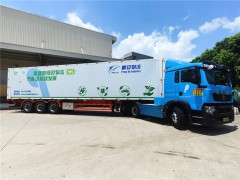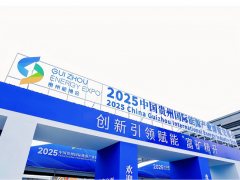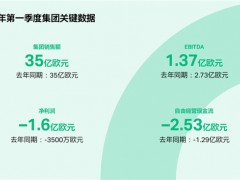據(jù)烴加工新聞2月14日消息稱,隨著全球領(lǐng)導(dǎo)人尋求能源解決方案,以幫助實(shí)現(xiàn)脫碳和提高能源安全,全球氫能轉(zhuǎn)型市場似乎正沿著軌道成為一個(gè)主要的全球能源的燃料使用的勢頭。
根據(jù)GlobalData的數(shù)據(jù),作為加速能源轉(zhuǎn)型的一種方式,人們對低碳?xì)淙剂系呐d趣正在迅速增長,這目前代表著超過4200萬噸/年的潛在產(chǎn)能。
GlobalData 能源轉(zhuǎn)型分析師 Barbara Monterrubio 表示:“氫作為一種低碳或零碳能源在儲(chǔ)能、建筑和交通等需求領(lǐng)域越來越受歡迎。許多國家已經(jīng)開始考慮以氫為基礎(chǔ)的經(jīng)濟(jì)來支持脫碳。目前,綠色氫在氫氣生產(chǎn)中所占的份額很小,但考慮到各國和企業(yè)宣布的雄心勃勃的目標(biāo),綠色氫有望增加。”
到2021年底,低碳?xì)湫袠I(yè)項(xiàng)目的產(chǎn)能超過4200萬噸/年,其中大部分來自綠色氫,目前電解槽管道的產(chǎn)能接近300吉瓦。到目前為止,4200萬噸/年的新產(chǎn)能中超過三分之二來自獨(dú)聯(lián)體地區(qū)、歐洲和大洋洲,其中87%和12%分別來自綠色和藍(lán)色項(xiàng)目,不到0.5%來自紫色和藍(lán)綠色項(xiàng)目。在2021年第四季度,33 個(gè)國家宣布新建低碳?xì)涔S,其中澳大利亞、智利和美國的項(xiàng)目為全球氫年產(chǎn)能增加了300萬噸。
Monterrubio繼續(xù)說道:“這些地區(qū)的國家正在推動(dòng)氫的使用,是全球氫政策的領(lǐng)導(dǎo)者。它們也處于發(fā)展氫經(jīng)濟(jì)的有利地位,但可能需要進(jìn)口來實(shí)現(xiàn)它們的低碳目標(biāo)。”
澳大利亞在90個(gè)不同的綠色氫樞紐和項(xiàng)目中以超過800萬噸/年的產(chǎn)能繼續(xù)引領(lǐng)著世界的未來產(chǎn)能,在這些項(xiàng)目中,綠色氨出口項(xiàng)目將利用日本、韓國和中國對低碳?xì)湫枨蟮念A(yù)期增長。由于天然氣的低成本,北美和中東在藍(lán)色氫產(chǎn)能方面領(lǐng)先。在北美,需求部門將包括煉油、化工、工業(yè)和運(yùn)輸。
Monterrubio補(bǔ)充說:“年對該行業(yè)來說是關(guān)鍵的一年,因?yàn)榈谝粋€(gè)大型項(xiàng)目有望達(dá)到最終投資決定(FID)階段并開始建設(shè)。最近開始工程和采購工作的2吉瓦的沙特新能源(Neom)綠色氫項(xiàng)目就是這樣。該項(xiàng)目計(jì)劃于今年開工,到2026年竣工。”
朱佳妮 摘譯自 烴加工新聞
原文如下:
Interest in low carbon hydrogen growing
With global leaders in search of energy solutions that help achieve decarbonisation and enhance energy security, the global hydrogen energy transition market seems to be on track to becoming a major global energy source in its own right with the fuels use gathering momentum.
Interest in low carbon hydrogen as a way to accelerate the energy transition is growing rapidly and the project pipeline now represents over 42 million tpy of potential capacity, according to GlobalData.
Barbara Monterrubio, Energy Transition Analyst at GlobalData, said: “Hydrogen is becoming popular as a low or zero-carbon energy source in demand segments such as energy storage, buildings, and transportation. Many countries have begun to consider a hydrogen-based economy to support decarbonisation. Green hydrogen presently has a small share in the hydrogen production mix but is poised to increase, given the ambitious targets announced by countries and companies.”
By the end of 2021, the low carbon hydrogen sector had over 42 million tpy capacity of pipeline projects, coming mostly from green hydrogen where the pipeline for electrolysers is now almost 300 GW. To date, over two thirds of the 42 million tpy of upcoming capacity is coming from the Former Soviet Union, Europe and Oceania, of which 87% and 12% comes from green and blue, respectively, with less than 0.5% coming from purple and turquoise projects. During 4Q21, 33 countries announced new low carbon hydrogen plants, with projects in Australia, Chile, and the US adding 3 million tpy capacity to the global hydrogen pipeline.
Monterrubio continued: “Countries in these regions are driving the use of hydrogen and are global leaders in hydrogen policy. They are also well-positioned to grow a hydrogen economy but will likely require imports to achieve their low carbon aims."
Australia continues to lead the world's upcoming capacity with over 8 million tpy across 90 different green hydrogen hubs and projects in the country, where green ammonia export projects are positioned to take advantage of the expected growth in low carbon hydrogen demand of Japan, South Korea and China. North America and the Middle East lead in blue hydrogen capacity due to the low cost of natural gas. In North America, demand sectors will include oil refining, chemicals, industry, and transportation.
Monterrubio added: “This year is crucial for the sector as the first large scale projects look to reach the final investment decision (FID) stage and start construction. This is the case with the 2GW Saudi Neom green hydrogen project in Saudi Arabia, which has recently started engineering and procurement works, and is looking to start construction this year for completion in 2026.”
免責(zé)聲明:本網(wǎng)轉(zhuǎn)載自其它媒體的文章,目的在于弘揚(yáng)石化精神,傳遞更多石化信息,并不代表本網(wǎng)贊同其觀點(diǎn)和對其真實(shí)性負(fù)責(zé),在此我們謹(jǐn)向原作者和原媒體致以敬意。如果您認(rèn)為本站文章侵犯了您的版權(quán),請與我們聯(lián)系,我們將第一時(shí)間刪除。







